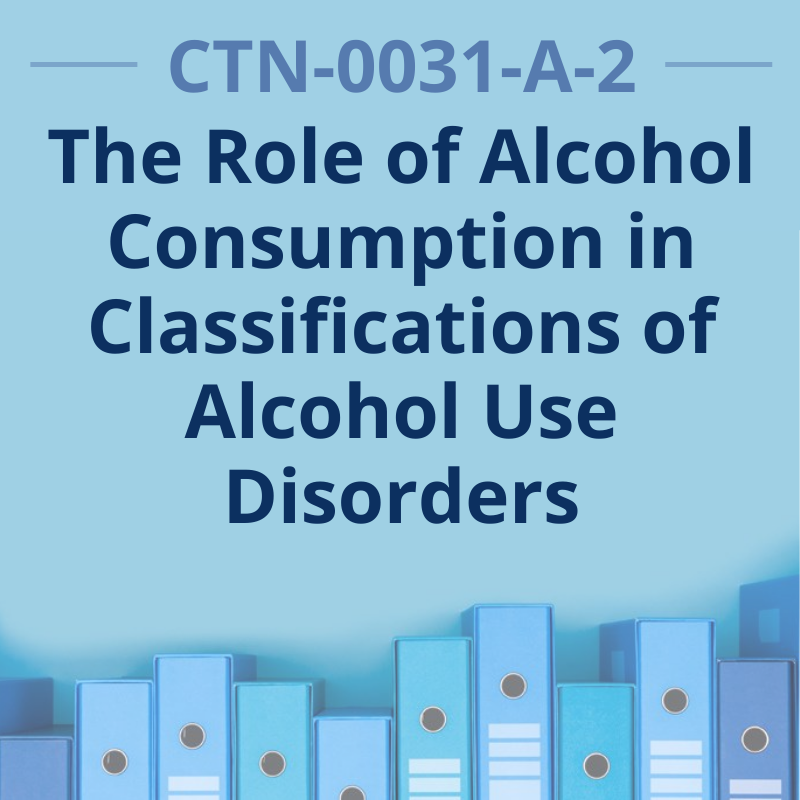CTN-0031-A-2: The Role of Alcohol Consumption in Classifications of Alcohol Use Disorders: A Clinical Study

Deborah Hasin, Ph.D.
Co-Lead Investigator
Columbia University and
New York State Psychiatric Institute
dsh2@columbia.edu
Dennis Donovan, Ph.D.
Co-Lead Investigator
Alcohol and Drug Abuse Institute
University of Washington
ddonovan@u.washington.edu
This study will investigate the utility of adding a frequency measure of alcohol consumption to the DSM-V diagnostic criteria for alcohol use disorders, by analyzing the statistical performance of the alcohol consumption measure in conjunction with the other DSM-IV alcohol abuse and dependence criteria arrayed along a continuum of severity in clinical samples. The alcohol consumption measure will be the frequency of drinking 5+ drinks (men) or 4+ drinks (women) on an occasion. To accomplish this goal, the study will collect baseline data in clinical samples on the 5+/4+ alcohol consumption measure and DSM-IV alcohol abuse and dependence criteria. These data will be used in two stages of analysis. First, it will conduct IRT analyses to determine whether the diagnostic criteria in conjunction with the 5+/4+ consumption measure form patterns similar to those found in the NESARC. In particular, it will focus on the role of the 5+/4+ consumption pattern when included in models that also include the DSM-IV alcohol abuse and dependence criteria. Second, it will determine whether the alcohol severity indicator derived from the first stage of analysis predicts repeated measures of alcohol consumption collected at the follow-up points in the study.
Primary Findings
Prescription opioid-dependent subjects had significantly decreased anisotropy in axonal pathways specific to amygdala as well as the internal and external capsules. Also, significant decreases in functional connectivity were found for seed regions that included the anterior insula, nucleus accumbens, and amygdale subdivisions. The longer duration of prescription opioid exposure was associated with greater changes in functional connectivity. Changes in amygdala functional connectivity were dependent on
amygdala volume and white matter anisotropy of efferent and afferent pathways of the amygdala. These findings suggest that prescription opioid dependence might cause multiple anatomical-functional changes in brain.

Results Article: Upadhyay J, et al. Alterations in Brain Structure and Functional Connectivity in Prescription Opioid-Dependent Patients. Brain 2010;133(7):2098-2114. [get article]
Related Studies
- CTN-0031: Stimulant Abusers Group to Engage in 12-Step (STAGE-12)
- CTN-0031-A-1: An Evaluation of Neurocognitive Function, Oxidative Damage, and Their Association with Treatment Outcomes in Methamphetamine and Cocaine Abusers
- CTN-0031-A-3: Organizational and Practitioner Influences on Implementation of STAGE-12
Related Resources
Node Involvement
Lead Node(s):
All Participating Nodes: